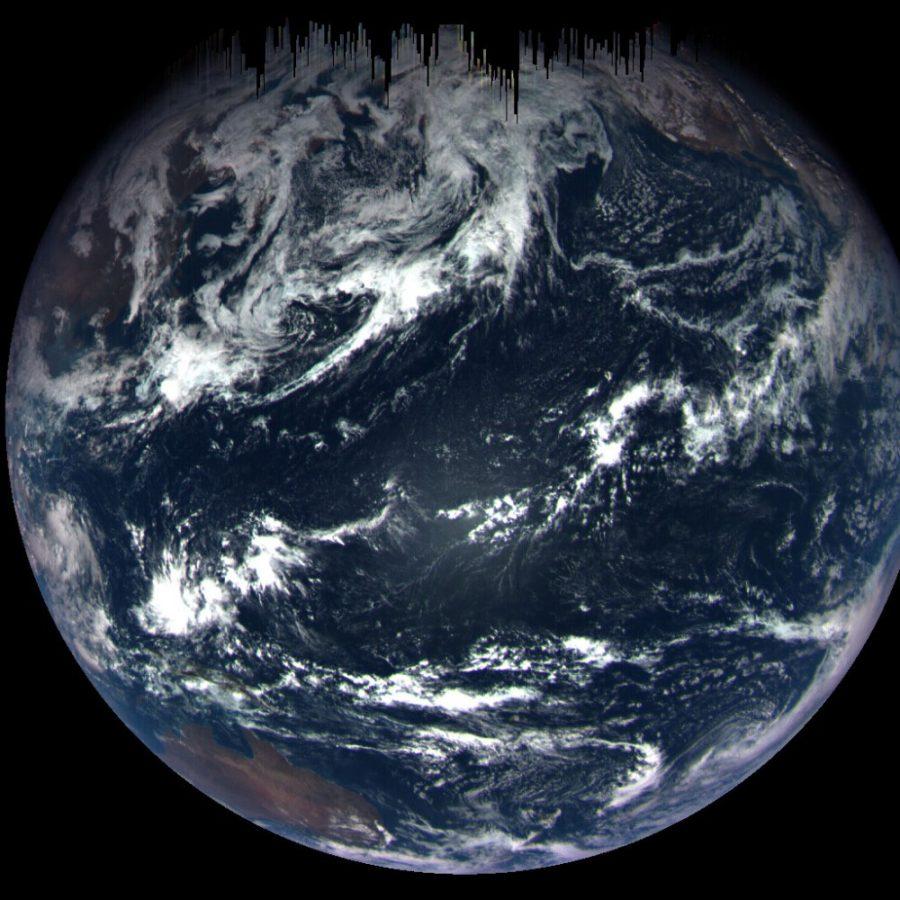Researchers on the OSIRIS-REx spacecraft team released a new study supporting a hypothesis that asteroids Bennu and Ryugu were shaped shortly after the destruction of their parent body, suggesting they may also be siblings.
Bennu and Ryugu are near-earth asteroids with similar orbits and subjects of two major spacecraft missions. Bennu will be sampled by NASA’s OSIRIS-REx spacecraft mission while Ryugu is being studied by Japan’s Hayabusa2 mission.
While orbiting Bennu, researchers were bewildered by surface photos coming back from OSIRIS-REx.
“We were surprised by seeing all of those impact craters all over the equator and all over the surface,” said Dante Lauretta, the principal investigator of the new study at the University of Arizona.
RELATED: UA physician and medical student bike across the country for U.S. healthcare system
Previous theories about the origins of Bennu’s and Ryugu’s unique shapes suggested they were younger formations that had evolved over time. However, numerous impact craters on the surface make a case for both asteroid shapes being a product of early formation. More visible impact indicated to the researchers that they needed a new explanation for how the asteroids could have achieved their shape.
Bennu and Ryugu’s shapes are similar and Lauretta said they are classified as having a spherical spinning top.
“It’s unusual for an object so small to get so close to being a sphere, only planets are spherical,” Lauretta said. “They have liquid interiors and achieve a balance between gravity and pressure.”
Lauretta asked members of the team to investigate if the asteroid’s shape could have originated from their infancy rather than created over time.
Olivier Barnouin, a research professor at Johns Hopkins University, said he was one of the first to consider an alternative theory for the cause of an asteroid’s shape a few years earlier.
“I had always been a little bit skeptical about the top shaped origin from YORP, which is the popular theory,” Barnouin said.
According to the YORP effect, an abbreviated name for the scientists who developed this theory, light from the sun could cause asteroids to rotate. Just as solar power can be harnessed for sustainable energy on Earth, solar can also be the energy to move objects in space.
“One of the problems with that hypothesis is that a lifetime to generate top-shaped asteroids from spin-up is often longer than the lifetime we anticipate these asteroids to live in the inner solar system,” Barnouin said.
The estimated time of an asteroid’s shape caused by YORP didn’t match the images received from OSIRIS-REx. Barnouin and his co-researcher Patrick Michel had already been working on papers to support a new theory for asteroid shapes when they were asked to investigate Bennu’s shape origin. Barnouin and Michel favored the possibility that some asteroids could gain their shape after the initial destruction of their parent body.
Barnouin said they enlisted the help of Ronald Ballouz, a research associate at the UA, to create high-resolution simulations to test their theory of parent body collision.
RELATED: Congressman Ruben Gallego and two health experts hold press conference for spike in COVID-19 cases
Ballouz’s simulations needed to answer multiple questions: could their shapes have formed shortly after collision? How could they have different hydration levels if they came from the same parent?
Bennu is believed to be more hydrated than Ryugu. Ballouz successfully provided evidence on how the asteroids could have different hydration levels but the same parent body.
“We were able to show that while some regions of the parent body had heated up to where you get water loss or dehydration,” Ballouz said. “Some other parts of the parent body are actually kept in their pristine condition.”
The hydration levels themselves have been cause for excitement from OSIRIS-REx researchers. According to Lauretta, some scientists theorize that Earth’s water could have arrived from impact by a near-Earth asteroid like Bennu and Ryugu. Receiving samples from both missions will allow them to get closer to answering the question of how Earth evolved to support life.
“When you study asteroids, you are really going back in time to the beginning of the solar system,” Lauretta said. “You are looking at rocks that existed before our earth did, especially with something like Bennu, you’re looking at things that lead to the origin of life on earth.”
Follow Alexandra Pere on Twitter









